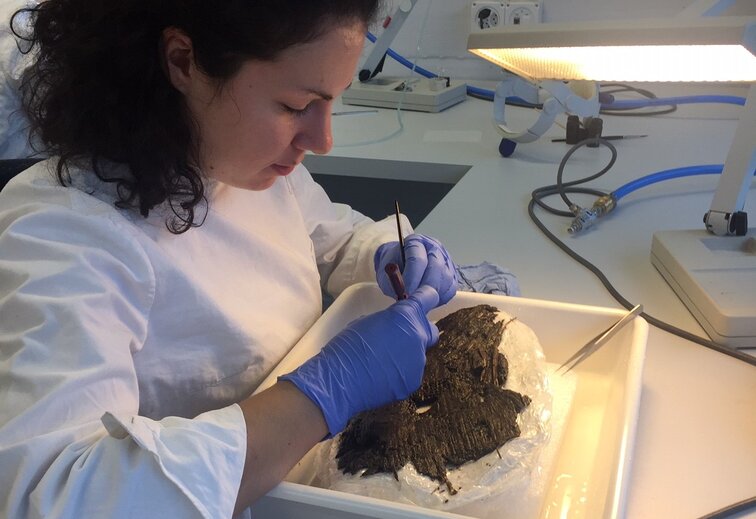accessibility.sr-only.body-term

Conservation and restoration of archaeological finds
The Swiss National Museum has a well-equipped laboratory for the conservation of archaeological objects. Where the customer meets the costs, specialist staff will also handle orders for external institutions.
When conserving waterlogged organic objects made of wood, textile, bast fibre, antler or bone, the first priority is to carefully restore the object to a dry and stable state. The same applies for composite objects and block recoveries. For these items and for wood, polyethylene glycol impregnation followed by freeze-drying or the alcohol-ether-resin method may be used. There are other, well-established impregnation and drying methods for textiles, antler and bone. For the conservation of metal objects made from iron, bronze, silver, gold and other alloys or combinations with other materials, the work includes mechanical cleaning, chemical stabilisation, desalination in alkaline solutions, and reduction using a high-frequency plasma process. After conservation work, any bonding work and modifications are undertaken if required, or support structures and mountings may be produced. Objects made from other materials such as glass or ceramics are expertly conserved.
The team will be happy to provide detailed information and advice.
accessibility.sr-only.person_card_info Conservator/restorer MA Stefanie Bruhin
Head of external services Archaeological Objects